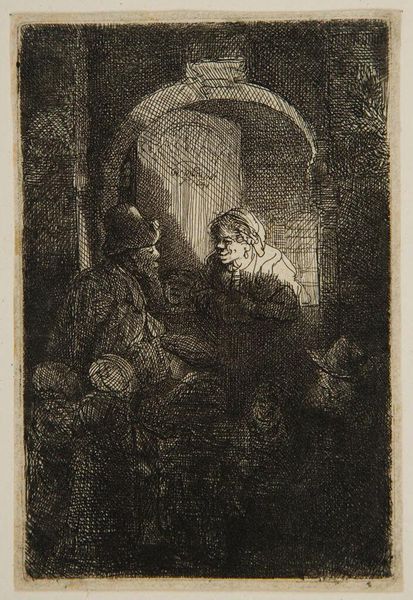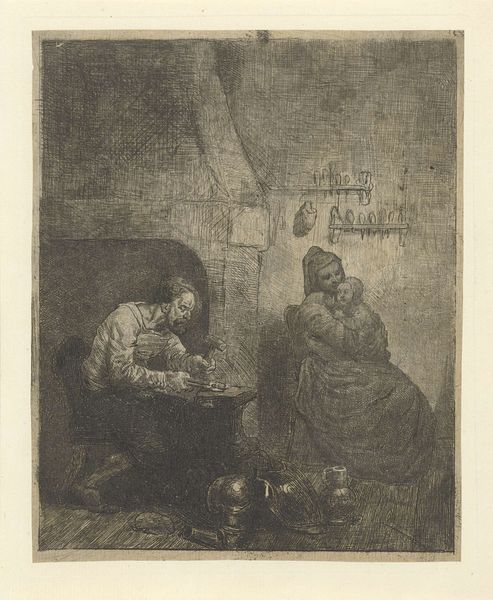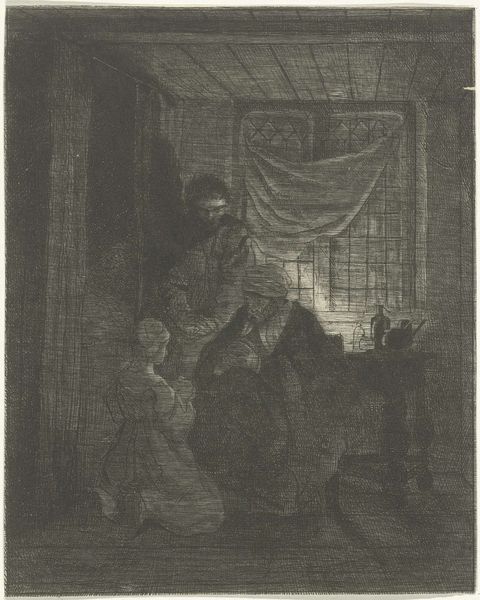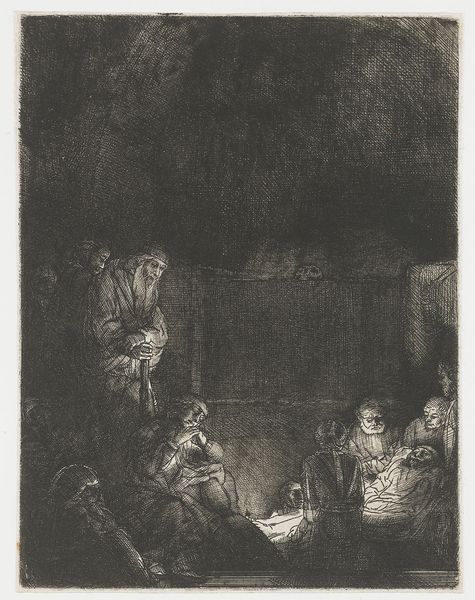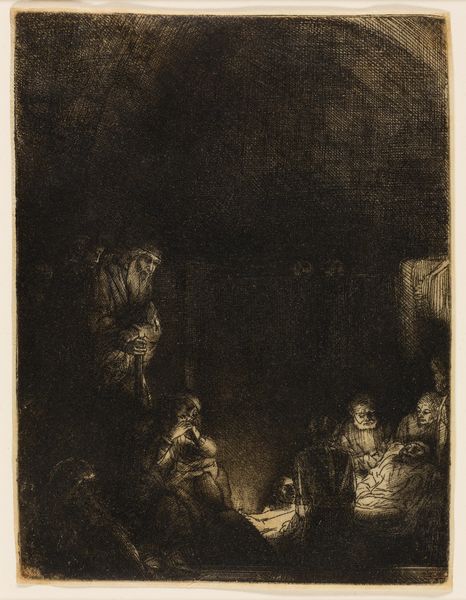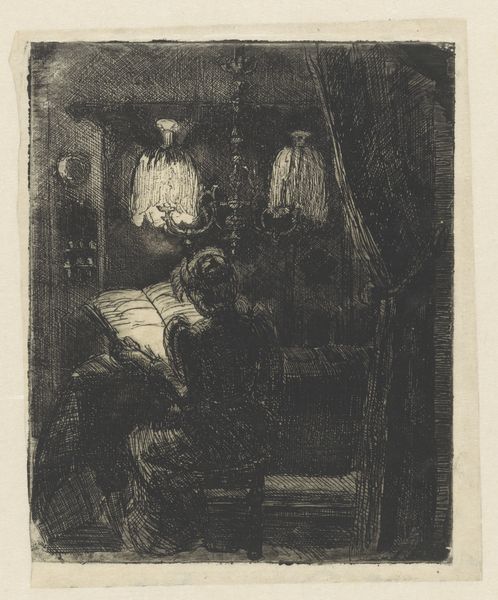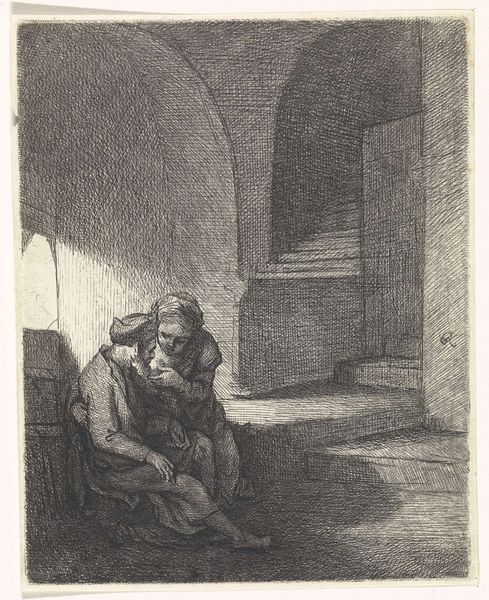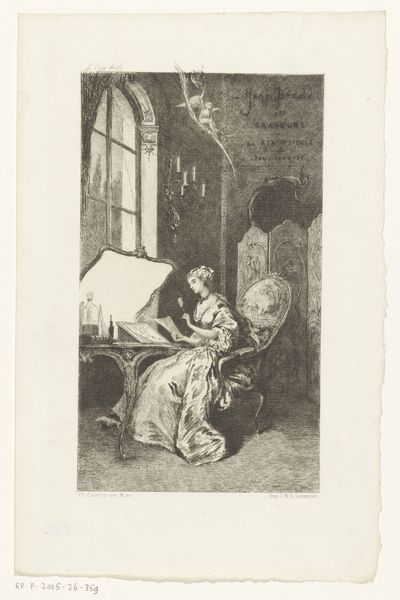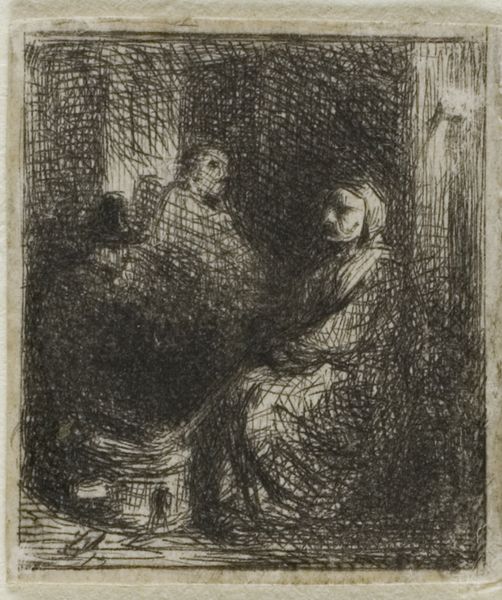
A hurdy-gurdy player followed by children at the door of a house 1641
0:00
0:00
rembrandtvanrijn
Rijksmuseum
etching
#
portrait
#
narrative-art
#
baroque
#
dutch-golden-age
#
etching
#
figuration
#
line
#
genre-painting
Dimensions: height 93 mm, width 61 mm
Copyright: Rijks Museum: Open Domain
Rembrandt van Rijn created this etching, titled "A hurdy-gurdy player followed by children at the door of a house," using an etching needle and copper plate. Look closely, and you’ll see how the web of tiny, precise lines define the scene. Etching is a printmaking technique that relies on acid to bite into a metal plate, in this case copper. Rembrandt would have covered the plate with a waxy, acid-resistant ground, then scratched his composition into it. The exposed metal would then be submerged in acid, which etches the lines into the plate. The deeper the bite, the darker the line will appear when printed. This laborious process allowed for multiples of the same image to be reproduced, and sold. Prints like these were a vital part of Rembrandt's artistic output and economic survival. They allowed him to reach a wider audience, far beyond his immediate location. Here, Rembrandt masterfully captured a slice of everyday life with incredible detail, turning the mundane into something truly remarkable. It challenges us to reconsider the value we place on both the subject matter and the artistry involved.
Comments
No comments
Be the first to comment and join the conversation on the ultimate creative platform.

